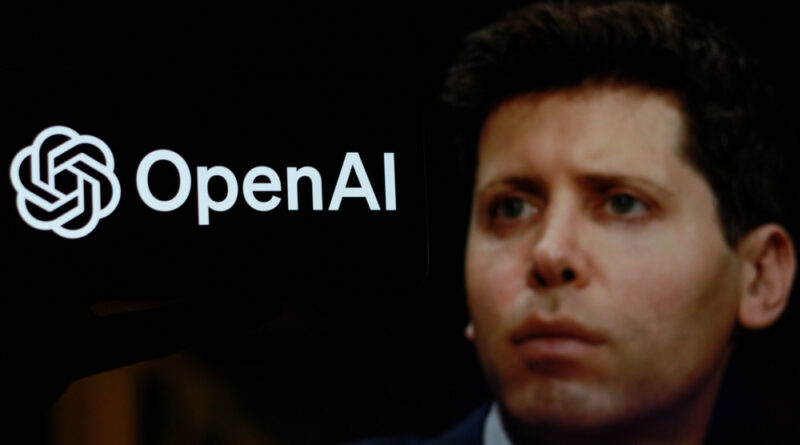Will AI Spark Mass Layoffs or an Employment Renaissance?
Artificial intelligence is no longer a futuristic experiment confined to research labs. Large language models debug code, automated agents write marketing copy, and synthetic voices answer customer calls. As these systems accelerate, a new fault line has emerged among the very people building them: will AI erase swathes of jobs or usher in an era of unprecedented labour demand?
Six of the field’s highest-profile figures offer sharply divergent forecasts. Their views reveal not only different assessments of technology, but also clashing philosophies about economics, policy, and human adaptability. Understanding those perspectives is key to gauging whether the coming decade will feel more like an industrial revolution or a global redundancy notice.
The Pessimists: Scaling Models, Shrinking Payrolls
Dario Amodei, the neuroscientist-turned-founder behind Anthropic, occupies the starkest end of the spectrum. He warns that half of entry-level white-collar roles may vanish within five years as AI agents master spreadsheet modelling, basic legal analysis, and junior consulting tasks. His team’s internal projections show unemployment potentially spiking to double-digit levels unless governments act quickly. Amodei believes the first casualties will be early-career analysts in finance, tech support, and professional services—roles that rely on pattern recognition and document review rather than deep domain expertise.
Geoffrey Hinton, often dubbed the “godfather” of deep learning, shares the concern but from a different angle. He argues that AI systems will eventually outperform people at nearly every cognitive task that does not demand physical dexterity. Routine intellectual labour—from drafting contracts to triaging service tickets—looks especially vulnerable, he says. In his scenario, only highly specialised experts and skilled trades that rely on manual precision (carpenters, plumbers, electricians) enjoy long-term insulation.
Taken together, the pessimistic camp predicts a labour market bifurcated between a small cohort of elite technologists and a larger pool of workers scrambling for fewer, lower-paid jobs—unless aggressive retraining and social-safety measures are introduced.
The Optimists: Creative Expansion, Not Collapse
On the opposite side stands Jensen Huang, whose company Nvidia supplies the chips that power most modern AI models. Huang regards AI as a catalyst for new industries rather than a guillotine for existing ones. He points to historic precedents: spreadsheets eliminated clerical accounting roles yet paved the way for financial analytics, and digital design tools shrank drafting departments while igniting the video-game and animation sectors. In his view, AI amplifies human creativity—allowing small teams to build feature-rich products and spawning demand for novel skill sets in prompt engineering, model curation, and AI operations.
Yann LeCun, Meta’s chief AI scientist, echoes that optimism. He emphasises that societies ultimately decide whether technology displaces or augments workers by redesigning workflows, education systems, and labour policy. LeCun envisions humans managing fleets of specialised AI assistants—a redefined supervisor role rather than outright replacement.
Demis Hassabis of Google DeepMind takes the long view. He predicts a boom in high-value technical jobs that blend domain expertise with AI fluency. Researchers, data scientists and biomedical engineers could become exponentially more productive, creating wealth that finances safety nets and retraining programmes. Hassabis also stresses human adaptability: over centuries, people have shifted from agriculture to factories to services, and he sees no reason that trend will stop.
The Pragmatists: Turbulence First, Opportunity Later
Somewhere between the two poles sits Sam Altman, chief executive of OpenAI. Altman readily concedes that AI will delete entire categories of work—customer-support agents, junior software testers, perhaps even entry-level code writers. Yet he also anticipates an avalanche of new roles, many of which are impossible to define today. He argues that society has repeatedly underestimated the number of net jobs created by previous technological leaps. However, he cautions that the arrival of physical robots and embodied AI will deliver a psychological jolt when autonomous machines move through public spaces, making job disruption feel tangible rather than abstract.
This middle-ground view—short-term dislocation followed by long-term gain—aligns with historical labour transitions. Still, it rests on whether reskilling systems can outrun the speed at which AI scales; a point where optimists and pessimists diverge sharply.
Reconciling the Forecasts: Four Variables to Watch
-
Learning Curve of Models
If large multimodal systems jump from passing basic professional exams to handling complex, context-rich tasks faster than expected, the pessimistic timeline gains credibility. -
Adoption Rate in Enterprise Software
AI baked directly into productivity suites can displace workers more quickly than standalone tools. Watching how aggressively corporations integrate AI into workflows is crucial. -
Policy Intervention
Subsidised upskilling, income-sharing taxes on AI productivity gains, or targeted wage insurance could soften shocks. Lack of such interventions magnifies downside scenarios. -
Cultural Acceptance
Public tolerance for AI-mediated decision-making—whether in medicine, finance, or law—will determine how much responsibility firms hand over to machines versus human overseers.
Skills That Remain in Demand
Even the most downbeat thinkers concede that certain capabilities will continue to command premium wages:
-
Advanced STEM knowledge: designing, tuning and auditing AI systems.
-
Human-centred trades: roles requiring social intelligence, tactile skill or on-site problem-solving (healthcare, specialty construction, repair services).
-
Creativity and brand storytelling: leveraging AI tools to produce original narratives and experiences rather than commoditised content.
-
AI governance and safety: evaluating ethical, legal and societal risks of powerful models.
Preparing for a Fluid Future
For individuals, the safest bet is lifelong learning with a focus on complementary skills—data interpretation, domain expertise, and cross-disciplinary thinking. For businesses, resilience hinges on embracing automation while investing in human capital to steer, verify and extend what machines produce. For governments, forward-looking policy—ranging from revamped curricula to portable benefits—will separate regions that thrive from those that stagnate.
The AI jobs debate will not end with a single white paper or conference panel. As models evolve and societal guardrails take shape, expectations will continue to shift. What is clear from the leaders building this technology is that passivity is no option. Whether one anticipates a jobs apocalypse or a creative renaissance, the next decade will reward preparation—and punish complacency—on a scale we have not seen since the dawn of the internet.
Photo Credit: DepositPhotos.com

